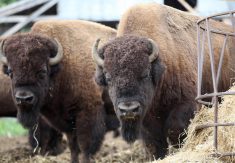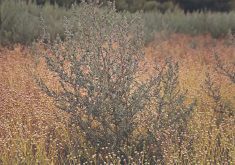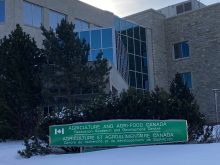Sandecki is a writer and columnist from Terrace, B.C. This column was previously published in the Terrace Standard.
An obituary printed in the Nov. 9 issue of the Province sent me to my copy of Their Hopes; Our Heritage, the community history of Vawn, Sask., published in 1992.
I was checking for a family named Alain whom I had never heard of before. According to the obituary, Camille Eckstein (nee Alain), was born in Vawn in 1920.
Vawn’s 1,208 page history indexes 1,007 family names but no Alain. But as happens when searching in a dictionary or encyclopedia, though I did not find what I was looking for, over the next two hours I reviewed the life histories of families who were our neighbours while I was growing up on a farm two miles north of Vawn.
Read Also

High prices see cow-calf producers rushing to incorporate
Farm accountants are reporting a steady stream of cow-calf producers rushing to get their operations incorporated ahead of selling their calves this fall.
Even though I attended school with many of their kids, the kids had grown up, and in many cases moved away since I left home.
The book told me what they had grown up to become, the kind of work they were doing, much about their families and where they were living.
The novelty of these histories lies in the glimpses they give of neighbours, many of whom we knew more as friends than intimates. The bulk of the stories were penned by younger family members who, though unschooled as writers, nonetheless produced amusing accounts of their relatives’ everyday lives.
Most stories contain some element of individuality, like the seven-year-old who crawled into a badger hole and remained stuck until rescued.
During the 1990s, prairie communities assembled local histories to commemorate pioneer families who settled the West. Residents of Vawn and 11 surrounding communities or school districts responded to calls from the Edam Historical Society, a group that understood the value of a community archive.
These histories document not only the daily struggle of pioneer families, but trace trends in clothing , home decor, recreational activities and modes of transportation. Photos most likely snapped with Brownie box cameras accompany most stories.
Communities are not alone compiling history books. Individual families do too. One prolific family that gathers for a reunion every five years, collaborated on a book with a write up from each member. Recently they updated the book and each descendant of the original family was given a copy.
My cousin Pat and her sisters in Saskatoon keep a copy of the Vawn book handy for ready reference. They usually get to a point in the conversation where one of them says, “what was the name of Louis’s mother?” or “what part of France did the Levesques come from?”
That’s when someone else says, “just let me get the Vawn book.”
And, as happened to me looking for the Alain family, from that point on they’re guaranteed at least two hours of research on one or several families.
“We’re all glad someone got busy and put the book together,” Pat says. “We’ve learned so much about so many people. But what will happen to our copies once we no longer need them? They are meaningless to our kids.”
Not necessarily. As future elementary students are required to learn something of Western Canada’s history, delving into these rudimentary archives will give them first-hand information, far more memorable than an assigned text written by a university professor.
My brother’s 10-year-old granddaughter has already benefitted from the Vawn book. I was able to scan century old photos of her great-grandparents’ homestead sod house and e-mail them to her to become part of her social studies project.
Any young person with even a little curiosity in genealogy would soon be caught up reading these artless memoirs. For mini memoirs is what many of these stories are, written by family members without a degree in creative writing.
It takes commitment to do the job, ask questions of living ancestors, fill in names and dates. Any family member can help create a personal history to inform, even delight, successive generations.
If public libraries aren’t stocking these community histories on their reference shelves, they should be.
As Pat notes, these histories are great for settling arguments.














